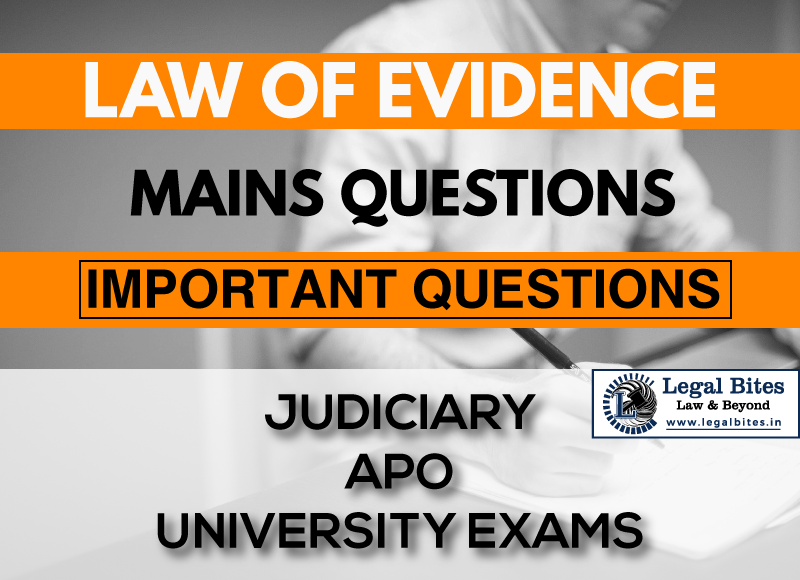Test identification does not constitute substantive evidence. Explain
Question: Test identification does not constitute substantive evidence. Explain Find the answer to the mains question only on Legal Bites. [Test identification does not constitute substantive evidence. Explain] Answer The facts, which establish the identity of the accused persons, are relevant under Section 9 of the Evidence Act. As a general rule, the substantive evidence of a witness… Read More »
;
Question: Test identification does not constitute substantive evidence. Explain Find the answer to the mains question only on Legal Bites. [Test identification does not constitute substantive evidence. Explain] Answer The facts, which establish the identity of the accused persons, are relevant under Section 9 of the Evidence Act. As a general rule, the substantive evidence of a witness is the statement made in Court. The evidence of mere identification of the accused person at the trial for...
Question: Test identification does not constitute substantive evidence. Explain
Find the answer to the mains question only on Legal Bites. [Test identification does not constitute substantive evidence. Explain]
Answer
The facts, which establish the identity of the accused persons, are relevant under Section 9 of the Evidence Act. As a general rule, the substantive evidence of a witness is the statement made in Court. The evidence of mere identification of the accused person at the trial for the first time is from its very nature inherently of a weak character.
The purpose of prior test identification, therefore, is to test and strengthen the trustworthiness of that evidence. It is accordingly considered a safe rule of prudence to generally look for corroboration of the sworn testimony of witnesses in Court as to the identity of the accused who are strangers to them, in the form of earlier identification proceedings.
“Identification parades” are held at the instance of the investigating officer for the purpose of enabling the witnesses to identify either the properties which are the subject matter of the alleged offence or the accused persons. The idea is to test the veracity of the witness on the question of the capability to identify an unknown person whom the witness may have seen only once.
The purpose is to test and strengthen the trustworthiness of evidence. The whole idea is that witnesses who claim to have seen the culprits at the time of occurrence are to identify them from the midst of other persons without any aid or any other source Significantly, there is no provision for TI (Test identification) parade in the Criminal Procedure Code and the Evidence Act.
TI parade is a weak sort of evidence. It is not substantive evidence. The substantive evidence is the evidence of identification in court and TI parade provides corroboration to the identification of the witness in court if required. However, the failure to hold a TI parade would not make inadmissible the evidence of identification in court [Malkhan Singh v. State of M.P. (2003) 5 SCC 746].
As was observed by this Court in Matru v. State of U.P. (1971) 2 SCC 75 – identification tests do not constitute substantive evidence. They are primarily meant for the purpose of helping the investigating agency with an assurance that their progress with the investigation into the offence is proceeding on the right lines.
The identification can only be used as corroborative of the statement in court. The necessity for holding an identification parade can arise only when the accused are not previously known to the witnesses.
Important Mains Questions Series for Judiciary, APO & University Exams
- Law of Evidence Mains Questions Series Part-I
- Law of Evidence Mains Questions Series Part-II
- Law of Evidence Mains Questions Series Part-III
- Law of Evidence Mains Questions Series Part-IV
- Law of Evidence Mains Questions Series Part-V
- Law of Evidence Mains Questions Series Part-VI
- Law of Evidence Mains Questions Series Part-VII
- Law of Evidence Mains Questions Series Part-VIII
- Law of Evidence Mains Questions Series Part-IX
- Law of Evidence Mains Questions Series Part-X

